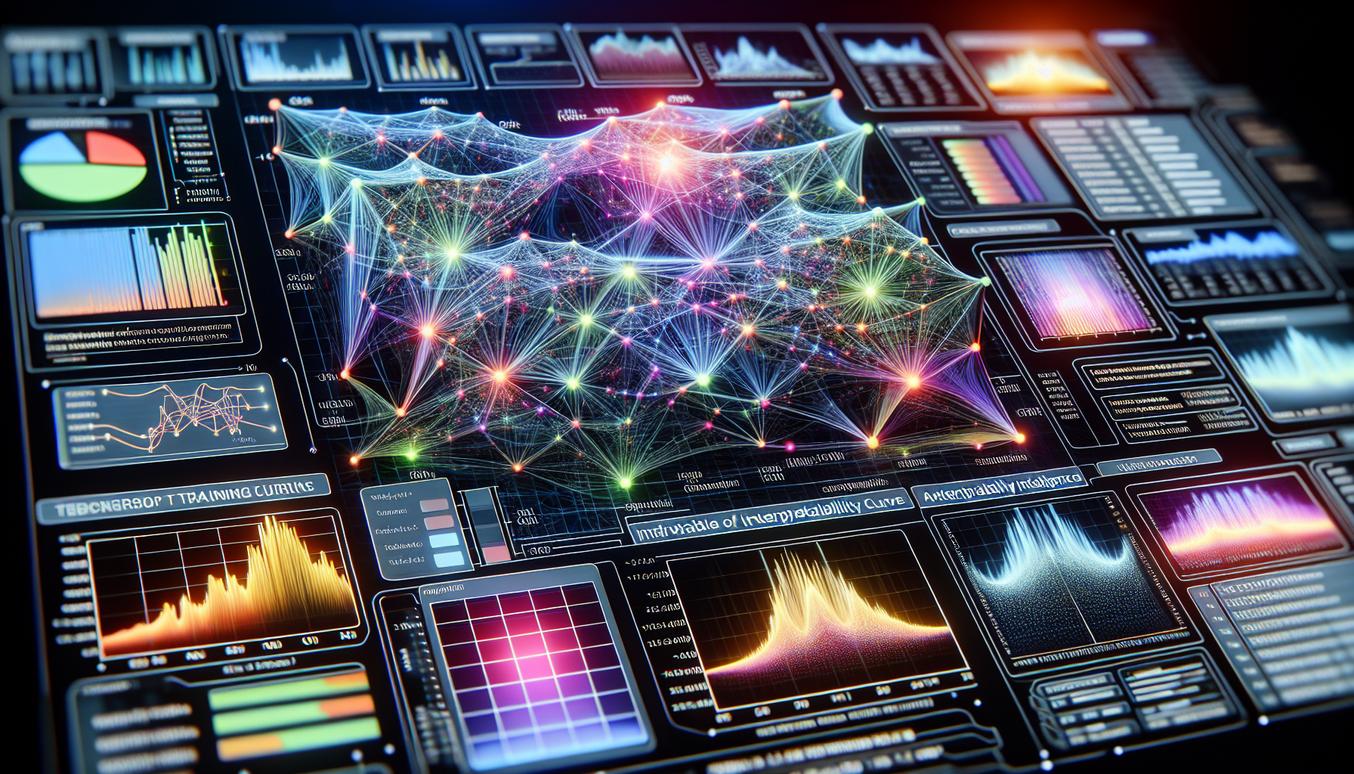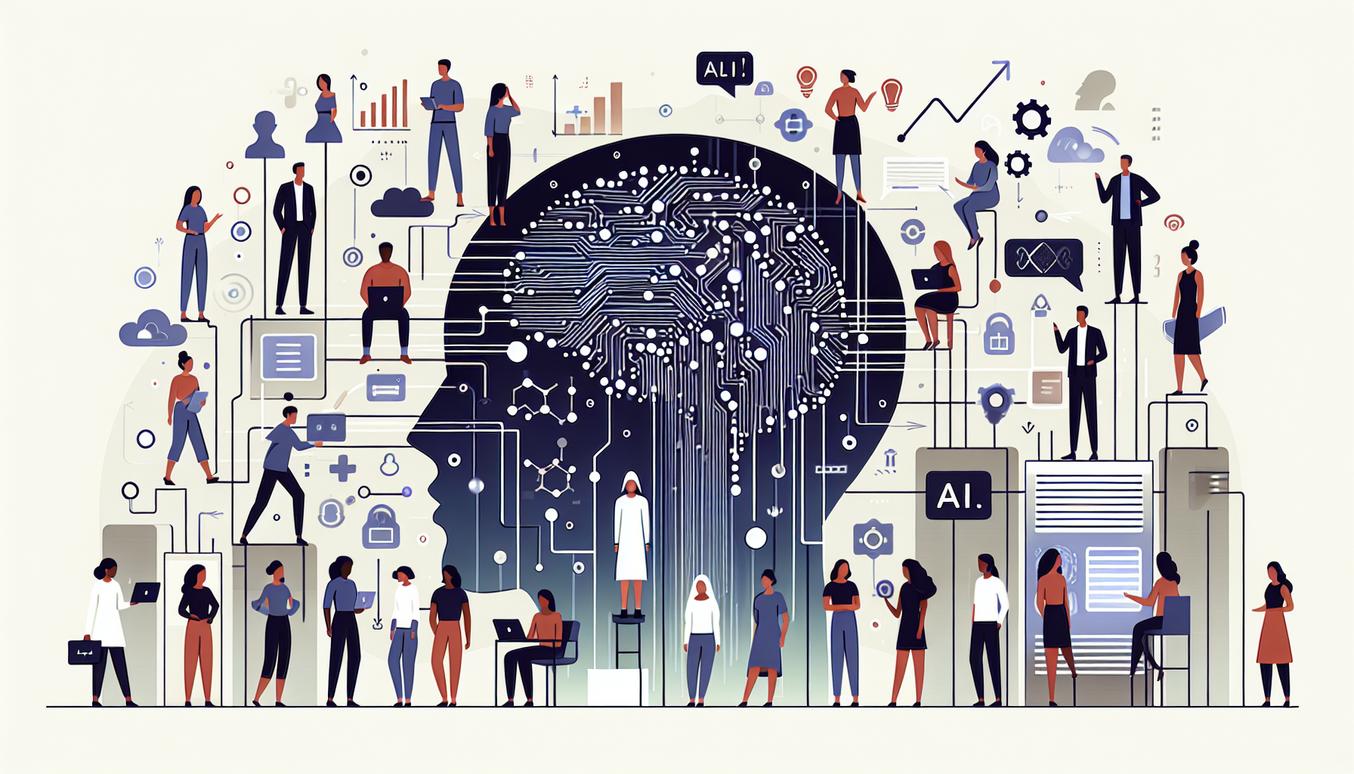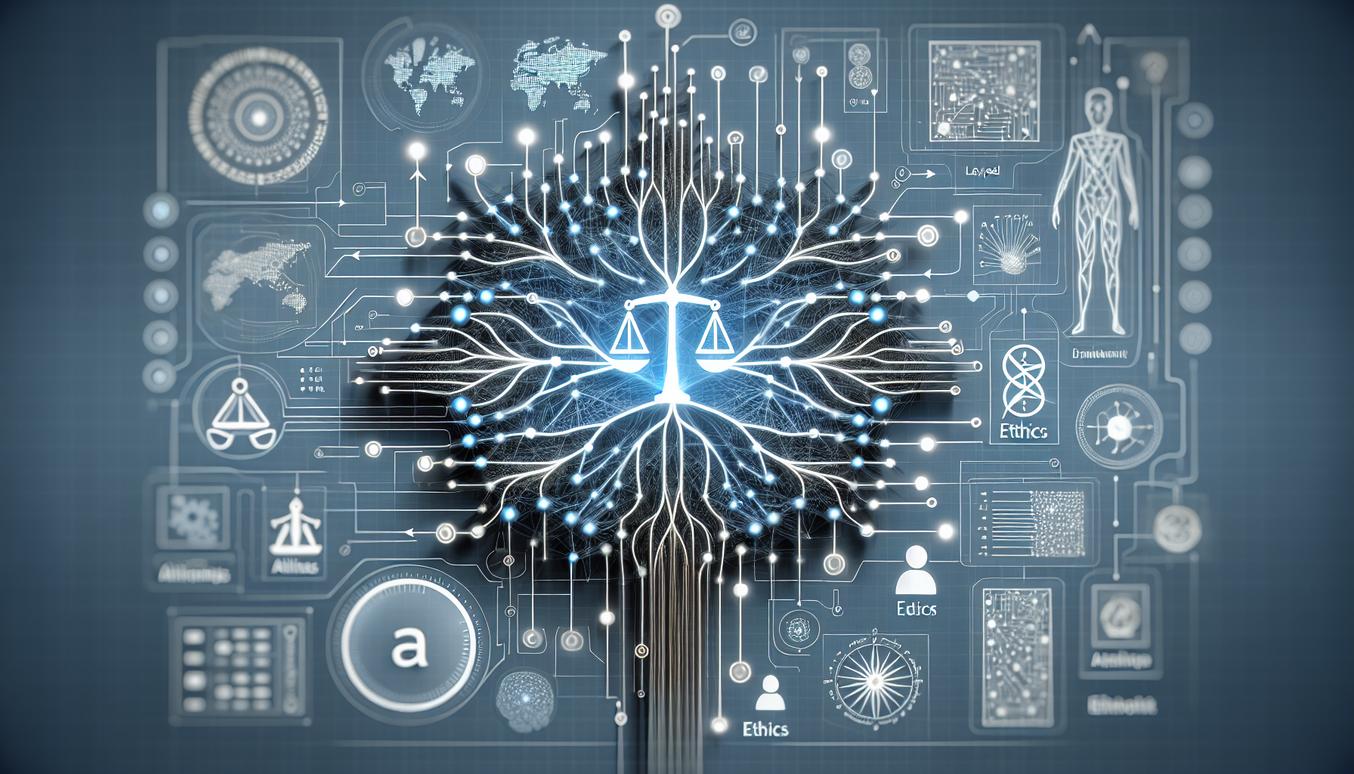Introduction: Why Neural Approaches Matter Today
From recommending your next favorite song to enabling self-driving cars, neural networks are the engine behind many of the artificial intelligence breakthroughs we see today. They represent a powerful subset of machine learning, inspired by the structure and function of the human brain. Unlike traditional programming where rules are explicitly coded, neural networks learn patterns directly from data. This ability to learn complex, non-linear relationships makes them incredibly versatile and effective for tasks that are difficult for humans to define with simple rules, such as identifying a cat in a photo or translating languages. As data becomes more abundant and computational power grows, understanding the fundamentals of neural networks is no longer just for academic researchers; it is an essential skill for aspiring developers, data scientists, and tech innovators.
A Friendly Metaphor for How Networks Learn
Imagine a student trying to learn to identify different types of fruit. At first, they know nothing. You show them a picture of an apple (the input) and ask, “What is this?” They make a random guess, “It’s an orange” (the prediction).
You then provide the correct answer, “It’s an apple” (the ground truth). The student notes how far off their guess was (the error or loss). Based on this feedback, they adjust their internal thought process. They might think, “Okay, things that are red and round with a stem on top are more likely to be apples, not oranges.”
This process of guessing, getting feedback, and adjusting their understanding is repeated thousands of times with pictures of apples, oranges, bananas, and more. Each time, their “mental model” gets a little more accurate. This is precisely how neural networks learn. Through a process called training, they continuously adjust their internal parameters to minimize the error between their predictions and the actual answers, gradually becoming expert pattern recognizers.
Core Components Explained: Neurons, Layers and Activations
At their core, neural networks are built from a few simple, interconnected components. Understanding these building blocks is the first step to demystifying how they work.
Neurons: The Building Blocks
The most basic unit of a neural network is the neuron (or node). Think of it as a tiny calculator. It receives one or more inputs, and each input has an associated weight, which signifies its importance. The neuron multiplies each input by its weight, sums them up, adds a value called a bias, and then passes this final number through an activation function. The weights and biases are the parameters that the network “learns” during training.
Layers: Organizing the Neurons
Neurons are organized into layers. A simple neural network has at least three types of layers:
- Input Layer: This is the entry point for your data. It has one neuron for each feature in your dataset (e.g., for an image of 28×28 pixels, you might have 784 input neurons).
- Hidden Layers: These are the layers between the input and output. This is where the magic happens and the network learns to recognize complex patterns. A “deep” neural network is simply one with many hidden layers.
- Output Layer: This layer produces the final prediction. The number of neurons here depends on the task (e.g., one neuron for a price prediction, or ten neurons for classifying digits 0-9).
Activation Functions: Adding Non-linearity
The activation function is a crucial component within a neuron. After a neuron calculates its weighted sum, the result is passed through an activation function. Its purpose is to introduce non-linearity into the model. Without it, a neural network, no matter how many layers it has, would just be a simple linear model. Non-linearity is what allows neural networks to learn incredibly complex patterns. Common activation functions include ReLU (Rectified Linear Unit), Sigmoid, and Tanh.
Architectural Families: Feedforward, Convolutional, Recurrent and Transformers
Not all neural networks are built the same. Different architectures are designed to excel at different types of tasks and data.
Feedforward Neural Networks (FNNs)
This is the simplest type of neural network, where information flows in only one direction—from the input layer, through the hidden layers, to the output layer. There are no loops or cycles. FNNs are great for structured data tasks, like predicting house prices based on features like size and location.
Convolutional Neural Networks (CNNs)
CNNs are the superstars of computer vision. They are specifically designed to process pixel data. Their key innovation is the use of “filters” or “kernels” that slide across an image, detecting specific features like edges, corners, and textures. This hierarchical feature detection makes them incredibly effective for tasks like image classification and object detection.
Recurrent Neural Networks (RNNs)
RNNs are designed for sequential data, where order matters. Think of text, speech, or time-series data like stock prices. RNNs have a “memory” loop that allows information from previous steps in the sequence to persist and influence the current step. This makes them ideal for tasks like language translation and speech recognition.
Transformers
The Transformer architecture has revolutionized the field of Natural Language Processing (NLP). Instead of processing data sequentially like an RNN, it uses a mechanism called attention to weigh the importance of all input words simultaneously. This parallel processing capability allows it to handle long-range dependencies in text much more effectively, leading to state-of-the-art performance in tasks like text generation and summarization.
Training Dynamics: Loss Surfaces, Gradients and Optimization
Training a neural network is the process of finding the optimal set of weights and biases that makes the best possible predictions.
The Goal: Minimizing Loss
We start by defining a loss function (or cost function). This function measures the difference between the network’s predictions and the true labels. A high loss value means the network is performing poorly; a low loss value means it’s doing well. The entire goal of training is to adjust the network’s parameters to minimize this loss.
Navigating with Gradients
Imagine the loss function as a vast, hilly landscape, where the lowest point represents the minimum possible error. Our goal is to find that lowest point. Gradient descent is the algorithm that helps us navigate this landscape. It calculates the gradient (the slope of the hill) at our current position and takes a small step in the steepest downward direction. By repeating this process, we gradually descend toward a minimum. The algorithm that calculates these gradients efficiently is known as backpropagation.
Optimizers: The Engine of Learning
An optimizer is an algorithm that modifies the way we perform gradient descent to make it faster and more reliable. While standard gradient descent works, more advanced optimizers like Adam, RMSprop, or Adagrad can adjust the learning rate automatically and help navigate tricky parts of the loss landscape, leading to faster convergence.
Regularization and Common Pitfalls
A trained model must generalize well to new, unseen data. Two common issues that prevent this are overfitting and underfitting.
The Overfitting Problem
Overfitting occurs when a model learns the training data too well, including its noise and random fluctuations. It essentially memorizes the training set instead of learning the underlying patterns. An overfit model will perform exceptionally well on the data it was trained on but will fail to generalize to new data. The opposite problem, underfitting, is when a model is too simple to capture the underlying structure of the data.
Regularization Techniques
Regularization refers to any technique applied to a model to reduce overfitting. The goal is to make the model simpler and more robust. Common strategies include:
- L1 and L2 Regularization: These add a penalty to the loss function based on the magnitude of the model’s weights, discouraging it from learning overly complex models.
- Dropout: During training, this technique randomly “drops out” or deactivates a fraction of neurons in a layer. This forces the network to learn more robust features and prevents any single neuron from becoming too influential.
- Early Stopping: This involves monitoring the model’s performance on a separate validation dataset and stopping the training process when performance on that set stops improving.
Practical Walkthrough: Build a Simple Network from First Principles with Pseudocode
Let’s outline the steps to train a basic two-layer neural network. This pseudocode bridges the gap between theory and practice.
// 1. Initialize Network Parameters
weights_hidden = random_numbers(input_features, hidden_neurons)
bias_hidden = zeros(hidden_neurons)
weights_output = random_numbers(hidden_neurons, output_neurons)
bias_output = zeros(output_neurons)
// 2. Set Training Hyperparameters
learning_rate = 0.01
epochs = 1000
// 3. Start the Training Loop
FOR epoch in 1 to epochs:
// -- Forward Pass --
// Calculate hidden layer output
hidden_input = dot_product(inputs, weights_hidden) + bias_hidden
hidden_output = apply_activation(hidden_input)
// Calculate final output
final_input = dot_product(hidden_output, weights_output) + bias_output
predicted_output = apply_activation(final_input)
// -- Calculate Loss --
error = true_labels - predicted_output
loss = mean_squared_error(error)
// -- Backward Pass (Backpropagation) --
// Calculate gradients for all weights and biases
gradient_weights_output = ... // Based on error
gradient_bias_output = ... // Based on error
gradient_weights_hidden = ... // Based on error propagated back
gradient_bias_hidden = ... // Based on error propagated back
// -- Update Parameters --
weights_hidden -= learning_rate * gradient_weights_hidden
bias_hidden -= learning_rate * gradient_bias_hidden
weights_output -= learning_rate * gradient_weights_output
bias_output -= learning_rate * gradient_bias_output
END FOR
Interpreting Models: Techniques and Tools for Insight
Deep neural networks are often called “black boxes” because their decision-making processes can be difficult to understand. Model interpretability is the field dedicated to peering inside this box. Techniques like SHAP (SHapley Additive exPlanations) and LIME (Local Interpretable Model-agnostic Explanations) can help us understand which input features were most influential in a particular prediction. For example, for an image classifier that identifies a dog, these tools can highlight the pixels corresponding to the dog’s ears and snout, confirming the model is “looking” at the right things.
Responsible Deployment: Fairness, Robustness and Data Privacy Considerations
As neural networks become more powerful, deploying them responsibly is paramount. This involves considering several ethical dimensions.
Bias and Fairness
If a neural network is trained on biased data, it will learn and amplify those biases. For instance, a hiring model trained on historical data from a male-dominated industry might unfairly penalize female candidates. Ensuring fairness requires carefully curating training data and auditing model outputs for demographic disparities.
Robustness and Security
Neural networks can be vulnerable to adversarial attacks, where tiny, imperceptible changes to an input can cause the model to make a completely wrong prediction. For safety-critical systems like autonomous vehicles, ensuring the model is robust against such manipulations is essential.
Data Privacy
Models are trained on vast amounts of data, which can often be sensitive. Techniques like federated learning and differential privacy are emerging strategies that allow for the training of powerful neural networks without centralizing or exposing raw user data, a key consideration for applications in healthcare and finance in 2025 and beyond.
Concise Case Studies: Image, Text and Sequential Data Examples
Let’s look at how different neural network architectures solve real-world problems.
- Image Classification: A Convolutional Neural Network (CNN) is trained on a dataset of thousands of labeled images of cats and dogs. It learns to identify features like pointy ears, whiskers, and snouts. When given a new image, it can accurately classify it as either a cat or a dog.
- Text Sentiment Analysis: A Transformer model is trained on a massive dataset of movie reviews, each labeled as positive, negative, or neutral. It learns the nuances of language and context. When given a new review, it can determine the sentiment with high accuracy.
- Sequential Data Prediction: A Recurrent Neural Network (RNN) is trained on historical weather data (temperature, humidity, pressure). It learns the temporal patterns and can predict the temperature for the next 24 hours.
Debugging Checklist and Troubleshooting Recipes
When your neural network isn’t working, here are some common issues and first steps to fix them:
- Loss is not decreasing: Check your learning rate. If it’s too high, the model may be overshooting the minimum; if it’s too low, training will be too slow. Also, ensure your data is shuffled properly.
- Model performs well on training data but poorly on validation data: This is a classic sign of overfitting. Try adding dropout, using L2 regularization, or getting more training data.
- Loss becomes NaN (Not a Number): This is often caused by exploding gradients. Try reducing your learning rate or implementing gradient clipping, which caps the maximum value of the gradients.
- Model performance is very low overall: Your model might be too simple for the task (underfitting). Try adding more layers or more neurons per layer. Also, double-check your data preprocessing steps.
Further Reading and Curated Resources
To deepen your understanding of neural networks, we recommend exploring these foundational resources:
- For a comprehensive overview of the concept, the Wikipedia page on Neural Networks is an excellent starting point.
- To explore the vast landscape of different architectures and techniques, this Deep Learning Survey provides a detailed academic perspective.
- To understand how networks can learn through trial and error, read about Reinforcement Learning, a related field of machine learning.
- For crucial guidelines on responsible model development, the ACM provides a robust code of AI Ethics.
Summary and Learning Next Steps
We’ve journeyed from a simple metaphor to the core components, architectures, and practical considerations of neural networks. You now have a foundational understanding of what neurons and layers are, how models learn through gradient descent, and why architectures like CNNs and Transformers are suited for different tasks. The key takeaway is that neural networks are powerful tools for learning patterns from data, but they require careful design, training, and ethical consideration.
Your next step is to move from theory to practice. Start a small project using a popular library like TensorFlow or PyTorch. Try building a simple image classifier on a well-known dataset. The hands-on experience of building and debugging a model is the most effective way to solidify your knowledge and continue your journey into the exciting world of artificial intelligence.









